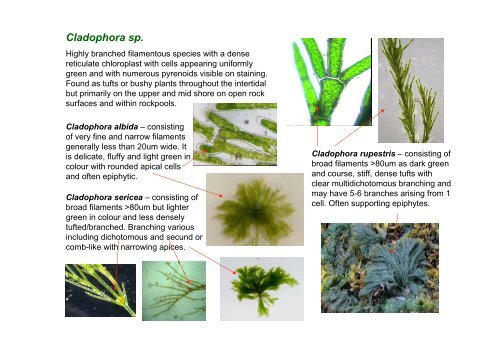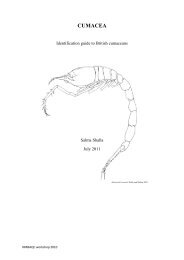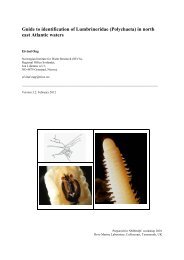s A Field Guide to the British Seaweeds - NMBAQC
s A Field Guide to the British Seaweeds - NMBAQC
s A Field Guide to the British Seaweeds - NMBAQC
Create successful ePaper yourself
Turn your PDF publications into a flip-book with our unique Google optimized e-Paper software.
Cladophora sp.<br />
Highly branched filamen<strong>to</strong>us species with a dense<br />
reticulate chloroplast with cells appearing uniformly<br />
green and with numerous pyrenoids visible on staining.<br />
Found as tufts or bushy plants throughout <strong>the</strong> intertidal<br />
but primarily on <strong>the</strong> upper and mid shore on open rock<br />
surfaces and within rockpools.<br />
Cladophora albida – consisting<br />
of very fine and narrow filaments<br />
generally less than 20um wide. It<br />
is delicate, fluffy and light green in<br />
colour with rounded apical cells<br />
and often epiphytic.<br />
Cladophora sericea – consisting of<br />
broad filaments >80um but lighter<br />
green in colour and less densely<br />
tufted/branched. Branching various<br />
including dicho<strong>to</strong>mous and secund or<br />
comb-like with narrowing apices.<br />
Cladophora rupestris – consisting of<br />
broad filaments >80um as dark green<br />
and course, stiff, dense tufts with<br />
clear multidicho<strong>to</strong>mous branching and<br />
may have 5-6 branches arising from 1<br />
cell. Often supporting epiphytes.




